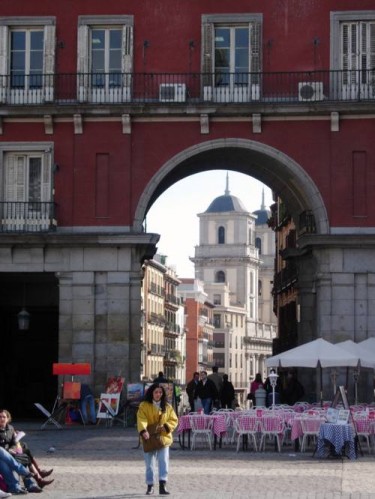
I’ve been a fan of the department store El Corte Inglés for years. What began as a flirtation with the ubiquitous Spanish chain when I first encountered it in 1999 in Madrid turned into a full-fledged love affair after a couple of subsequent trips to Barcelona, where I learned that the store doesn’t just carry souvenirs, clothing, toiletries, housewares, and electronics, but some of the most exquisite shoes I’ve ever seen. How could you not fall in love with a store that carries beautiful pumps by Balenciaga – and sells them at a reasonable price?
I couldn’t imagine that my passion for El Corte Inglés could get any deeper, but that’s exactly what happened on my last visit to Spain. While I was researching my trip (my first to Spain since being diagnosed with celiac disease), I came across the association CelÃacs de Catalunya, which provides information for gluten-intolerant people who live in the Catalan region. In addition to recommended restaurants (which includes some information on other parts of Spain, too), the website provides a list of stores that sell celiac-safe foods, and I spotted El Corte Inglés on this list. After a visit to the store’s website, I was entranced. Was it possible that the department store’s supermarket division really stocked gluten-free croissants by Proceli, madeleines by Adpan, and baguettes by Special Line El Corte Inglés, with each product priced between 2 and 5 Euros? I suspected I was dreaming.
It turned out to be reality. While not every El Corte Inglés supermercado carried the full range of products that appear on the store’s website, every single one carried enough gluten-free goodies to thrill me and my taste buds. Not only was I able to enjoy baked goods sin gluten every day of my trip, but many of the products were vacuum-sealed and dated five months ahead (though once the package is opened, the contents need to be consumed within a few days).
In addition to my almost daily visits to the supermercado, I had to drop by the shoe department once or twice, too. Even with so many packages of Proceli croissants in my suitcase, I managed to find room for one more pair of Spanish-made shoes. The croissants are long gone, sadly, but the shoes are enjoying their new home in New York.
(A note on language and translation: The El Corte Inglés website is in Spanish, while the site for CelÃacs de Catalunya is in Spanish and Catalan. You can translate some of the pages using Google. To view the options at El Corte Inglés Supermercado, you will need to enter a Spanish postal code. Can’t think of one? Type “1†in the box and a drop-down menu called “Centros de Recognida†will appear. Pick any option on that list and it will bring you do the main page for the supermarket. Because of the frames on this page, I find Google’s translator doesn’t work with it. Click on the first drop-down menu and select “Alimentos dieteticosâ€; in the second drop-down menu, select “Productos para celiacosâ€; on the third drop-down menu, click on each selection in turn to find gluten-free beer, cookies, breads, pastas, and other products.)





